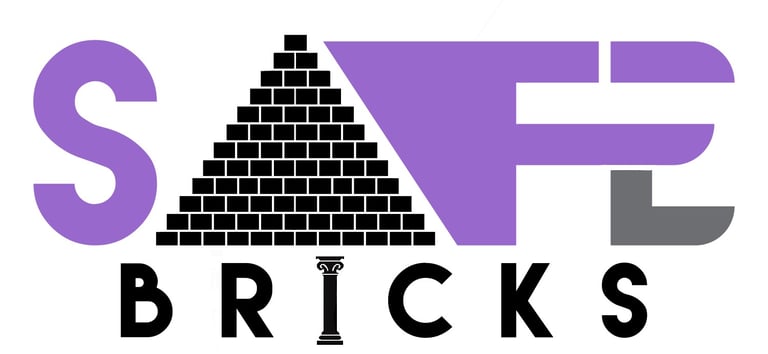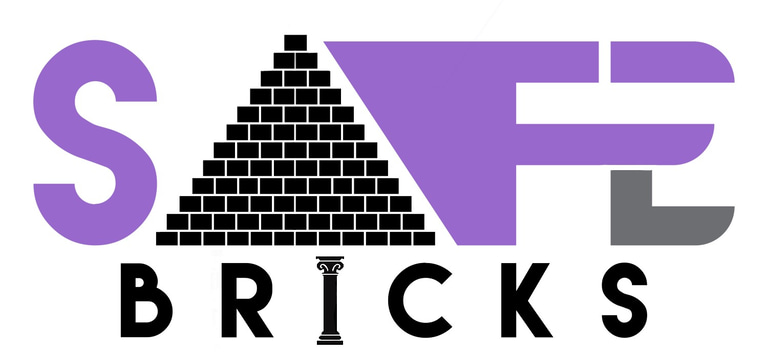How to Spot a Faulty Structural Engineer Report
A Game-Changing Guide for Brighton & Hove Property Owners
If you're planning structural work on your home or investment property in Brighton & Hove, chances are you’ve received—or will soon receive—a structural engineer’s report. These documents are often treated as gospel by architects, builders, and local councils alike. But here’s the truth: not all reports are created equal, and when they’re wrong, the cost can be devastating.
At Safe-Bricks, we’ve reviewed countless structural reports, and we’ve caught serious errors in reports issued by so-called experts—including some that would have caused dangerous failures or resulted in completely unnecessary work. This guide will walk you through how to spot a faulty structural engineer report, especially if your property is in Brighton & Hove, where traditional construction methods and materials add an extra layer of complexity.
Why Structural Reports in Brighton & Hove Need Extra Scrutiny
Most structural engineers are trained to work with modern materials and construction techniques—but Brighton & Hove’s housing stock is anything but modern. From bungaroosh walls, lime mortar, timber joists, and chalk rubble to ornate Regency facades and Victorian cellars, the properties here demand local knowledge and context-specific structural calculations.
Unfortunately, we’ve seen reports where:
Buildings were misidentified as masonry instead of bungaroosh.
Beams were specified without checking existing load paths.
Calculations didn’t match the architectural design.
Key factors like moisture damage, historic movement, or timber decay were completely ignored.
These kinds of mistakes aren’t minor—they can lead to incorrect steel sizing, planning delays, spiralling budgets, or even collapsed ceilings and structural failure.
That’s why this guide is essential reading before you move forward with any structural works in Brighton & Hove.
1. Understand the Basics: What Should a Structural Engineer’s Report Include?
Before we get into red flags, here’s what a quality structural report should include:
A clear description of the existing building structure and materials
Detailed structural calculations that align with your architect’s plans
Assessment of load-bearing walls, beam spans, and support points
Consideration of localised issues (e.g., bungaroosh, damp, or subsidence)
Recommendations that are buildable and make sense on site
Proper annotations, sketches or CAD drawings
When hiring Brighton & Hove structural engineers, always ask to see examples of past reports to gauge their clarity and relevance.
2. Red Flag #1 – The Building Type is Misidentified
One of the most common errors in Brighton & Hove period property structural reports is misidentifying the building construction. If your property is made from bungaroosh, chalk rubble, or timber frame and the engineer describes it as “masonry,” that’s a major red flag.
Why it matters:
Different materials behave differently under load. Treating a bungaroosh wall like solid brick can result in inappropriate beam placement, foundation miscalculations, and long-term instability.
At Safe-Bricks, we’ve had to halt construction mid-project after identifying this exact error—saving clients thousands in potential repair work.
3. Red Flag #2 – Vague or Missing Structural Calculations
Every major structural element—such as a new steel beam or removal of a wall—requires precise structural calculations. If your report lacks detailed numbers or relies on copy-pasted boilerplate language like “appropriate beam to be installed,” you’ve likely got a subpar report on your hands.
Look for:
Accurate beam spans and dimensions
Clear calculation of live and dead loads
Foundation assumptions if applicable
Concrete padstone sizing or spreader plate details
Bad structural calculations in Brighton & Hove are often the result of generic assumptions that don’t account for local materials or floor load conditions. Insist on detailed, property-specific figures.
4. Red Flag #3 – No Mention of Period Construction Features
A report for a Brighton & Hove property that doesn’t mention age-related issues—like degraded timber, historic movement, or old lime-based construction—is either careless or rushed.
What’s missing:
Acknowledgement of existing cracks or settlement
Advice about protecting breathable wall systems
Structural allowances for uneven or shifting floors
Consideration of heritage or conservation status
Many Brighton & Hove period property structural reports overlook these factors, causing confusion between builders, project managers, and planning authorities later down the line.
5. Red Flag #4 – The Recommendations Are Impractical
Have you ever read a structural report that sounds fine on paper but doesn’t actually work on site? This is more common than you might think.
We’ve reviewed reports that:
Suggest inserting 300mm deep steel beams where there’s only 250mm clearance
Recommend removing a wall that supports a hidden chimney breast
Call for padstones that don’t fit in the joist cavity
Always cross-check recommendations with your contractor or project manager. If the report is out of touch with real-world constraints, Safe-Bricks can help translate and rework the proposal into something that will pass Building Control and actually work on site.
6. Red Flag #5 – The Engineer Refuses to Revise or Engage
Lastly, beware of engineers who refuse to amend their report after being presented with clear issues. If they become defensive or uncooperative when concerns are raised, that’s a major warning sign.
You are paying for a professional service. A reputable structural engineer should be willing to adjust, clarify, and stand by their calculations—especially when a local expert like Safe-Bricks highlights specific flaws or missed details.
What to Do If You Suspect a Faulty Report
If you think your structural engineer has made mistakes or issued an incomplete report, don’t panic—but do act quickly:
Get a second opinion. We can review the report for you and highlight any critical problems.
Stop work if needed. Continuing based on flawed calculations can be dangerous.
Request amendments. A good engineer will be open to reviewing the issues.
Document everything. Keep a clear paper trail to protect your liability and project timeline.
At Safe-Bricks, we’ve helped clients challenge flawed reports, get accurate revisions, and save thousands in unnecessary structural work. When it comes to structural calculations in Brighton & Hove, you want precision—not guesswork.
Need Help? Book a Structural Report Review with Safe-Bricks
If you’re unsure about a recent report, or you want an extra layer of professional oversight, Safe-Bricks offers an independent structural report review service for Brighton & Hove clients. We check for:
Accuracy of calculations
Local material compatibility
Buildability and logic
Legal and planning implications
Let’s make sure your structural works are safe, sensible, and future-proof.
Final Thoughts: Brighton Needs Better Building Advice
Structural integrity is not something to take lightly—especially in a city like Brighton where so many properties have heritage features and hidden structural quirks. By learning how to spot a faulty report, you’re protecting your home, your budget, and your peace of mind.
We believe Brighton & Hove structural engineers should be held to a higher standard—and with the right knowledge, you can demand it.
Get a Free Quote Today
Planning structural work in Brighton & Hove? Safe‑Bricks Limited is the trusted choice for reviewing and executing reliable designs based on accurate reports. Our team specialises in identifying issues in Brighton & Hove period property structural reports and ensuring all work is backed by precise, site-specific structural calculations in Brighton & Hove. When you need expert insight beyond what most Brighton & Hove structural engineers provide, we’re here to help. Book your free, no-obligation consultation today—call now.


Safe-Bricks Limited © 2025. All rights reserved.




